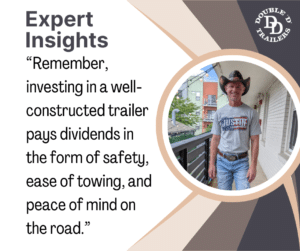How to Tow a Bumper Pull Horse Trailer: A Safety Guide 101
Knowing how to tow a bumper pull horse trailer safely and efficiently is pivotal for both the trailer’s performance and the quality of your experience. If you already own a BP horse trailer, you’re likely to understand most of the possible safety concerns and issues. Still, there’s plenty to be shared and discussed on this exceptionally important matter, which is exactly what we’ll do in this guide.
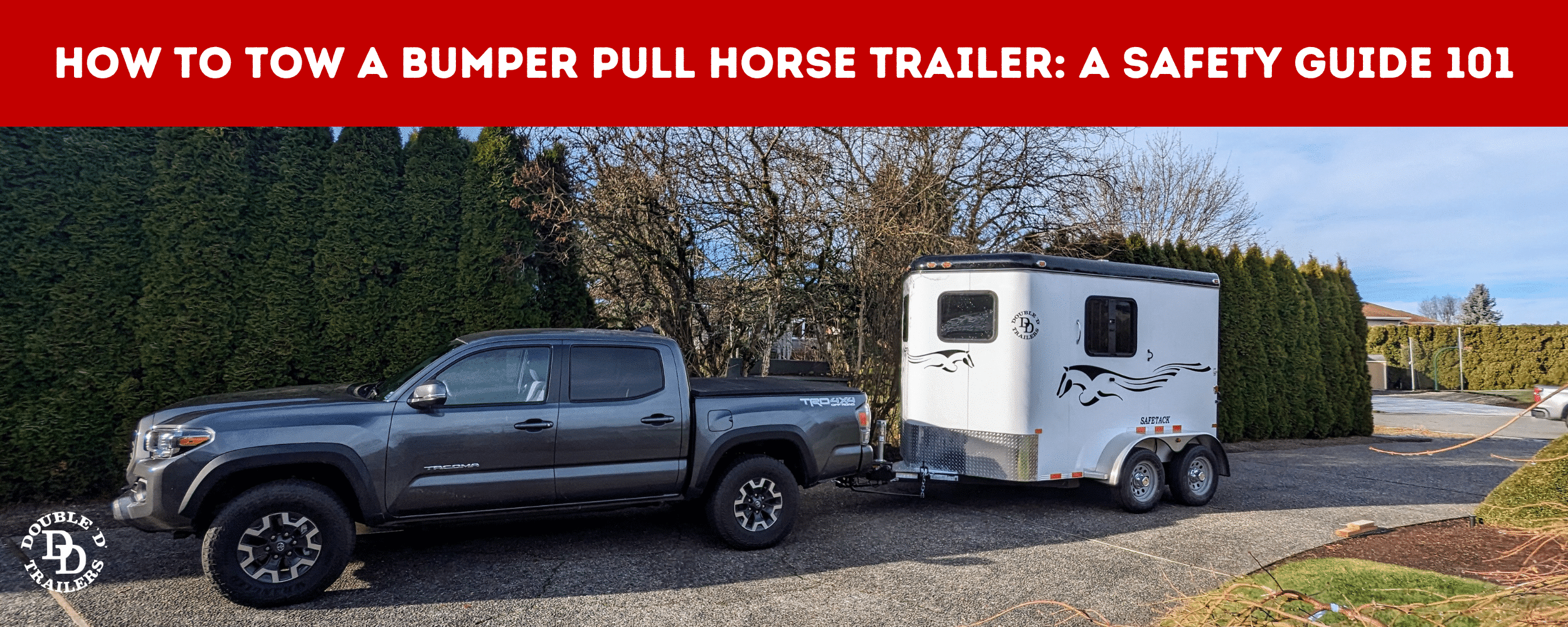
Fundamentals of Bumper Pull Horse Trailer Towing
The fundamentals of bumper pull horse trailer towing always start with the towing vehicle’s specs. Its capabilities are crucial for towing a BP trailer safely, and it must be an adequate choice for the trailer or own or plan to order. Tongue weight, GVWR (Gross Vehicle Weight Rating, also known as GVM, or Gross Vehicle Mass), weight distribution, center of gravity, safety features and equipment are other key factors. When towing a bumper pull trailer, the route, road surface, and weather conditions also have plenty to do with towing safety.
Essential Towing Equipment for Bumper Pull Horse Trailers
Towing a bumper pull horse trailer safely requires a good understanding of the specific equipment needed: towing mirrors, braking aid systems, sway control systems, safety chains, and more. But it all starts with the variety of hitch types and parts.
1. Hitch Types
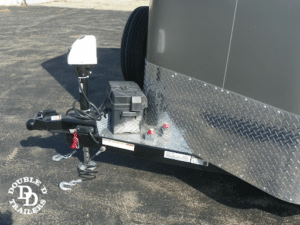
- Fixed-drawbar hitches consist of a single hitch component featuring a non-detachable and non-adjustable ball mount. This type of setup doesn’t work with additional aftermarket hitch-mounted accessories, at least in most cases.
- Receiver hitches are a good alternative to consider. They’re best described as hollow tubes that are most often welded or bolted to the vehicle's chassis. Receivers come in various sizes, meaning they’re suitable for a variety of bumper pull horse trailer hitches.
- Weight-distributing hitches are designed to balance and distribute the weight of the loaded trailer. In this configuration, tension is applied through a spring bar and chain connected to the towing vehicle, effectively shifting a portion of the trailer's hitch weight away from the rear axle of the towing vehicle. This weight is then redirected towards the front axle of the towing vehicle and the axle(s) of the trailer.
How to Find the Right Hitch for Your Bumper Pull Horse Trailer
Before you go for a certain hitch type and model, you should make a few considerations that may or may not force you to go with another type:
- Compatibility: The hitch you choose should be appropriate for both the tow vehicle and trailer in terms of installation and safety. Some tow hitches and receivers may not be suitable for certain vehicle models and types.
- Weight: You should be aware of the hitch specs before purchasing and installing one. It should be able to cope with the trailer’s GVM and vertical tongue weight.
Ball Hitch (or Receiver Hitch)
Bumper pull horse trailers usually attach to ball hitches, which happen to be the most common solution for such needs. A ball hitch comprises a ball mount and a hitch ball that the bumper pull horse trailer coupler attaches to.
How to Choose the Right Ball Hitch
Knowing the GVW and tongue weight of the trailer is essential for choosing the right ball hitch, and so is the coupler’s size and height. If you opt for a regular ball hitch, it would most often be equipped with a non-adjustable ball mount, meaning that the ball size needs to be accurate as well. In case you need to tow different trailers depending on the occasion, you should consider an adjustable ball mount hitch.
Adjustable Ball Mount Hitch
An adjustable ball mount hitch has an obvious advantage: the ball can be adjusted in height or replaced with a larger one, depending on the model. If you must tow a trailer with a coupler that’s not leveled with the hitch, you can simply adjust the ball mount.
How to Choose the Right Adjustable Ball Mount Hitch
Choosing the best adjustable ball mount hitch depends on the trailers you are likely to tow in the future. Make sure its weight rating is appropriate as well, otherwise, it would not be suitable for most trailers you intend to hitch.
Weight Distribution Hitch
Weight distribution hitches incorporate a ball mount, alongside spring bars meant to distribute the weight of the trailer evenly across the towing vehicle's axles. This setup is ideal for wide and heavy bumper pull horse trailers because it partially relieves the vehicle from the trailer’s vertical tongue weight.
How to Choose the Right Weight Distribution Hitch
In case you have concerns about the weight of the trailer you will be towing, it’s best to equip your tow vehicle with a weight distribution hitch. The one to choose should be compatible with the vehicle, which should be mentioned in the hitch’s specification.
2. Towing Mirrors
Towing mirrors are almost always a must-have addition to your tow vehicle. There are various sizes to choose from, and you need to add a pair if the bumper pull horse trailer you’d be towing is large and wide. Except for improved safety and an extended field of view, such mirrors may also be required for regulatory compliance, depending on your area.
Slide-On Towing Mirrors
Slide-on towing mirrors are probably the most common type because they’re compatible with many vehicles and they’re affordable, not to mention that installation and removal only take seconds. They simply slide onto the tow vehicle’s mirrors.
Why Do You Need Slide-On Towing Mirrors?
If you’re on a budget but need towing mirrors to enhance safety and comply with local regulations, slide-on mirrors are an ideal solution to opt for.
Clip-On Towing Mirrors
Clip-on towing mirrors provide a firm grip on your existing mirrors, but their biggest advantage is the option for adjustments. This gives you the chance to set them in the best possible position to have the viewing angle you need.
Why Do You Need Clip-On Towing Mirrors?
Clip-on towing mirrors allow for better adjustment, meaning that you can set them at different angles. This way, you enhance towing safety even when you frequently pull differently-sized bumper pull horse trailers.
Strap-On Towing Mirrors
Strap-on towing mirrors are another versatile option to choose when you need to tow a wide bumper pull horse trailer. This type of towing mirror is compatible with most, if not all tow vehicles.
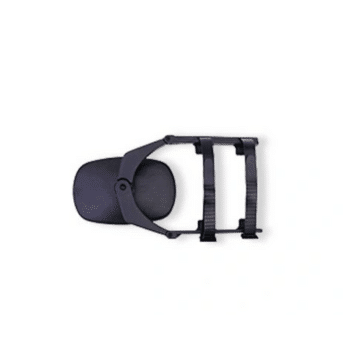
Why Do You Need Strap-On Towing Mirrors?
When you need a quick solution to extend your tow vehicle’s mirror angle, strap-on mirrors are a reasonable option. They’re affordable and typically fit any vehicle.
Permanent Towing Mirrors
Permanent towing mirrors are a great solution if you’re using your vehicle primarily for towing your bumper pull horse trailer. They typically come in a design that fits your particular vehicle (although mostly aftermarket parts), and can feature options such as electric adjustment and heating, meaning that you won’t lose the functionality of your original mirror assembly.
Why Do You Need Permanent Towing Mirrors?
When you have a tow vehicle you’re not using for anything else but pulling your bumper pull horse trailer, you should opt for permanent towing mirrors. They provide the best fit and enhance the appearance of the vehicle.
Dual-View Towing Mirrors
Dual-view towing mirrors add a dash of extra safety thanks to their split surface. These mirrors offer a wide-angle section in addition to the regular flat mirror, thus eliminating any potential blind spots.
Why Do You Need Dual-View Towing Mirrors?
In case you’re towing an exceptionally wide and long bumper pull horse trailer, you should try to provide the best field of view when maneuvering or navigating tight roads. Dual-view mirrors will provide you with that extra angle that you need to leave no obstacle or object hidden from your sight.
OEM Extendable Towing Mirrors
OEM towing mirrors are a preferred option because of their flawless installation and the fact that you can retract them when not towing anything. Some trucks and SUVs feature extendable towing mirrors as a factory option, and horse owners sometimes consider this an important factor when purchasing a tow vehicle for their bumper pull horse trailers.
Why Do You Need OEM Extendable Towing Mirrors?
If you’re in the market for a new tow vehicle or want to update the mirrors of the pickup truck or SUV you own and want to use for towing a bumper pull horse trailer, OEM extendable mirrors are the way to go if available. They bolt on without any compromises and allow for adjustments when the vehicle is not used for pulling a trailer.
3. Brake Controllers
Brake controllers play a key role in towing a bumper pull horse trailer safely. They are the one component that ensures your bumper pull horse trailer will come to a stop safely and efficiently in tandem with the tow vehicle. Choosing the right brake controller is essential for the trailer’s stability while slowing down.
How to Choose the Right Brake Controller for Your Bumper Pull Horse Trailer
You should choose the ideal brake controller after careful consideration of several factors, such as trailer weight and payload, towing frequency, tow vehicle compatibility, adjustment options, and extras such as info displays. In most cases, inertia-based controllers would get the job done, but there are other types to consider, such as time-delayed, proportional, and Bluetooth brake controllers.
Time Delay Brake Controllers
Bumper pull horse trailers can benefit from time-delayed brake controllers. This type applies braking power via an electric signal with different voltages during a given period. The voltage is set in advance, alongside the maximum time needed for braking force to be applied after you step on the brake pedal.
Do You Need a Time-Delayed Brake Controller?
You need a time delay brake controller if you’re towing trailers occasionally or if you need to pull different trailers with the same tow vehicle. These brake controllers are affordable, but they don’t offer the smooth braking experience proportional brake controllers can achieve.
Proportional Brake Controllers
Proportional brake controllers copy the tow vehicle’s braking intensity and apply the same amount to the electric braking system of the bumper pull horse trailer attached to it. This way, braking power is applied evenly, which enhances safety.
Do You Need a Proportional Brake Controller?
You need a proportional brake controller if you’re typically towing the same trailer, which would allow for a synchronized braking experience that you will get used to. Being able to predict the behavior of the trailer you’re towing is important in emergencies, and it also provides a smoother ride for your horses.
Inertia-Based Brake Controllers
Inertia-based brake controllers for bumper pull horse trailers rely on inertia sensors that measure the deceleration of the tow vehicle and apply power to the trailer’s braking system accordingly. This results in unprecedented stability during emergency braking.
Do You Need an Inertia-Based Brake Controller?
You need an inertia-based brake controller if you want the best experience for your horses during hauling. This type of controller doesn’t allow for sloppy or extreme braking of the bumper pull horse trailer, thus allowing for precise braking power application.
Bluetooth Brake Controllers
As the name suggests, Bluetooth brake controllers use a wireless Bluetooth connection to inform you of the braking performance of your bumper pull horse trailer and allow you to control it.
Do You Need a Bluetooth Brake Controller?
You need a Bluetooth brake controller if you prefer an easy brake controller installation and to have more control over the braking power and behavior of your bumper pull horse trailer. Using a handheld device to make adjustments is the easiest solution in such a case.
4. Trailer Jacks
Trailer jacks are part of the essential equipment of any bumper pull horse trailer. They provide stability when the trailer is not attached to the tow vehicle, but they’re also crucial for hitching and unhitching the trailer, which is an important stage of towing a bumper pull horse trailer safely. Maintaining a trailer jack is key for towing and using a BP trailer the right way.
How to Maintain Jacks for Bumper Pull Horse Trailers
To maintain a bumper pull horse trailer’s jack, you should inspect its components regularly. It should be cleaned and greased when needed to ensure it is fully functional. Some trailer jacks are removable, which allows for easy storage when not in use. When using the jack, its weight capacity should not be exceeded, and the surface it’s used on should be leveled and stable enough to support the weight.
A-Frame Jacks
A-frame jacks for bumper pull horse trailers are installed in the front section of the rig to better support its vertical tongue weight and keep it leveled when needed. The name comes from the A-shaped structure of the frame section they’re attached to.
How to Maintain A-Frame Jacks
A-frame jacks require regular lubrication of all moving parts. If you find rust, it should be cleaned to perfection, after which a coat of paint should be applied to prevent further rust issues
Drop Leg Jacks
Drop leg jacks are most often used with larger bumper pull horse trailers. They allow for quick and efficient trailer support thanks to a telescopic tubing mechanism that uses a pin to change the position of the foot to a lower setting.
How to Maintain Drop Leg Jacks
Maintaining a drop leg jack is crucial for its proper operation, but it’s also easy to do. All it takes is regular cleaning and lubricating. Sometimes, damage may occur that would make it inoperable, which is an issue that should be addressed immediately.
Side-Wind Jacks
Side-wind jacks are primarily used in smaller and medium-sized bumper pull horse trailers. As the name suggests, the crank handle is positioned on its side. This jack design is ergonomic and easy to operate, hence its common application. Plus, it’s a good solution for trailers with no space for a top-wind jack.
How to Maintain Side-Wind Jacks
The key to maintaining a side-wind jack is to ensure that it’s properly mounted. The cranking handle mechanism needs to be greased and cleaned often to ensure it is fully operable.
Top-Wind Jacks
Top-wind jacks operate similarly to side-wind models, but there is an obvious difference: the former uses a top-mounted cranking handle, which requires more space to operate freely. Top-wind models are also common for small and medium-sized bumper pull horse trailers.
How to Maintain Top-Wind Jacks
Maintaining top-wind bumper pull horse trailer jacks is not hard. All it takes is frequent lubrication of all moving parts and making sure all the jack’s bits are securely mounted.
Electric Jacks
Electric jacks allow you to lift, lower, and stabilize a bumper pull horse trailer with ease thanks to a built-in electric motor. This eliminates the need for manual labor, as there’s no cranking by hand involved. Instead, it all happens with a push of a button. Power comes from the trailer’s auxiliary battery.
How to Maintain Electric Jacks
Maintaining an electric bumper pull horse trailer jack requires a bit more effort compared to manual alternatives. The battery needs to be fully charged to provide enough power, and the electrical components need to be well protected from the elements. Cleaning electrical connections and lubricating the mechanics is also important.
Scissor Jacks
Scissor jacks are mostly used as stabilizers rather than for lifting or lowering a bumper pull horse trailer when hitching or unhitching. The name describes how they work: two lifting sections intersect in an X-shaped pattern, just like a pair of scissors. Almost all scissor jacks are manually operated.
How to Maintain Scissor Jacks
The screw mechanism that lifts the two sections of the jack needs to be greased and cleaned frequently to ensure its proper functionality. It’s important to keep it fully retracted when not in use to avoid damage and extend the jack’s lifespan.
Hydraulic Jacks
Hydraulic jacks are a common solution for bumper pull horse trailers. They operate using pressurized hydraulic fluid to lift or lower the trailer when needed, Hydraulic jacks are smooth and efficient, providing a controlled motion even under heavy load.
How to Maintain Hydraulic Jacks
Basic maintenance is enough for hydraulic trailer jacks. All you need to do is maintain the hydraulic fluid level and check for leaks. Cleaning and lubricating mechanical parts is also important.
5. Anti-Sway Bars and Stabilization Systems
One of the primary dangers of towing a bumper pull horse trailer is swaying. This could cause the rig to flip on its side and cause injuries and a lot of damage. To avoid this, anti-sway bars and stabilization systems come into play. Anti-sway bars resist the swaying pattern and prevent the trailer from going side to side violently. Stabilization systems are a must, as they keep the trailer in a straight like when it's exposed to twisty roads, strong side winds, or sudden changes in direction.
Friction Sway Control
Bumper pull horse trailer friction sway control is a safety feature designed to help mitigate trailer sway (fishtailing) during towing. The sway control system is a bar linked to both the trailer and hitch. The bar resists the sway pattern and dampens it, allowing the trailer to keep moving in a straight line.
Dual-Cam Sway Control
Dual-cam sway control systems use cams to control fishtailing. They’re ideal for heavier bumper pull horse trailers because they can resist more tension than sway bars. Dual-cam systems use a couple of arms attached to the A-frame of the BP trailer that are also connected to the trailer hitch head. There are chains attached to the tow vehicle’s frame that are attached to both arms to generate additional tension and help further reduce swaying by delivering constant sway resistance.
Electronic Sway Control
Electronic sway control systems are typical of modern, state-of-the-art bumper pull horse trailers. Such a system is capable of detecting sway movement, which is when it engages the tow vehicle’s brakes or retards the engine to eliminate fishtailing.
Weight Distribution Systems with Built-in Sway Control
Weight distribution systems with built-in sway control (referred to as integrated sway control weight distribution hitches) allows for improved stability and safety through ease of handling the bumper pull horse trailer you’re towing. This solution distributes the trailer’s GVM across its axles more evenly and brings convenience by combining the best of both worlds: a trailer hitch and a sway control system into one unit.
Types of Stabilization Equipment for Bumper Pull Horse Trailers
You can choose between several ways to stabilize a bumper pull horse trailer when parked. Either of them should be part of the towing equipment you have on board your BP trailer. They can provide convenience and safety by allowing you to secure the rig in place and level it perfectly without worrying about uneven weight distribution.
Wheel Chocks
Wheel chocks are a common feature of most bumper pull horse trailers, even if it’s not part of the factory equipment. It’s a necessity to have a set of these wedges if you want to safely park the trailer or secure it when replacing a flat tire, for example.
What are wheel chocks essentially used for?
Wheel chocks successfully eliminate movement, which is critical to achieve in some situations, such as repairs or maintenance. You need at least a pair of chocks, especially when you need to make sure the trailer will not self-propel when parked on a slope.
Stabilizing Bars
Stabilizing bars attach to the frame of bumper pull horse trailers and provide a safe and reliable way to support it. This solution is always effective because the bars are placed strategically to support the trailer’s weight evenly.
What are stabilizing bars essentially used for?
Stabilizing bars are often used alongside jacks to provide extra support and safety. It’s a good idea to have them if your trailer is relatively heavy.
6. Safety Chains and Cables
The towing setup for a bumper pull horse trailer should always incorporate safety chains or cables. These simple devices allow for a strong connection between the tow vehicle and the BP trailer, preventing the two from disconnecting in case the hitch mechanism fails. As a result, the trailer will not become completely loose, which could have devastating results.
How to Properly Attach Safety Chains and Cables to Your Bumper Pull Horse Trailer
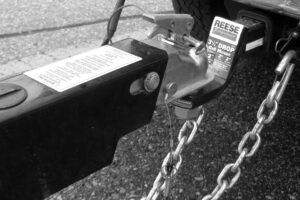
• Crossing Chains/Cables:
Most often, safety chains are crossed when installed, which provides extra stability. The correct attachment involves specific mounting points on the trailer tongue and the tow hitch.
• Correct Length:
The safety chains’ proper functionality depends on their length: they need to be exactly as long as they should be. The correct length allows for full turning motion without them scraping the ground.
• Secure Attachment:
Attaching safety chains securely can only be done if you use the designated mounting points instead of hooking them up straight to the tow bar or trailer coupler. Installation is done via specific elements such as links and hooks.
• No Dragging:
As mentioned above, safety chains or cables need to be long enough to allow the trailer to turn without any issues, but not too long, as they could scrape the road surface and cause a mess, not to mention that constant dragging would damage and weaken them.
• Alternate Routes:
One of the tricks when installing safety chains or cables is to mount them asymmetrically. The chains need to follow different routes between the tow vehicle and trailer, thus reducing the chance of both of them failing at the same time due to extreme tension or another issue.
How to Inspect Safety Chains and Cables on Your Bumper Pull Horse Trailer
Regular inspections of your safety chains or cables are critical for the safety of your horses. A proper check should start with examining the system for signs of wear, such as rust, twists, or damaged chain links. Testing their strength by slightly pulling them with a detached coupler should do the trick.
You should also check the attachment points should for cracks or wear. No signs of rust or damage should be tolerated. Even if everything looks good after another regular inspection, it pays off to change the set of safety chains or cables once every few years.
7. Weight Distribution Systems
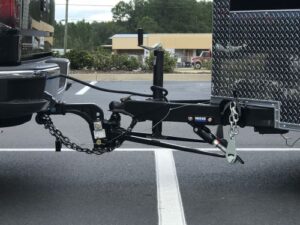
When you tow a large BP horse trailer with an impressive payload, a weight distribution system could help distribute the weight evenly and eliminate the stress on the towing vehicle caused by increased vertical tongue weight.
How Do Weight Distribution Hitches Work?
Weight distribution systems balance the load between the axles of the tow vehicle and trailer thanks to spring or torsion bars, thus preventing the former’s rear end to sag, which could end up in reduced steering capability. Additionally, weight distribution systems also help reduce fishtailing, as mentioned earlier in this guide.
What are the Benefits of Weight Distribution Hitches?
Weight distribution systems improve stability by not allowing uneven load distribution between the tow vehicle and the trailer’s axles. Additionally, such systems enhance the steering and braking of the tow vehicle by keeping it leveled as much as possible. Another important perk of using weight distribution hitches is that it improves some vehicles’ towing capacity.
When and Why Might You Need a Weight Distribution System in Your Bumper Pull Horse Trailer?
You might need a weight distribution system for your bumper pull horse trailer in case the latter is a large model capable of heavy loads (50% of the tow vehicle’s weight or more). Also, such a feature should be considered if the GVM of your bumper pull horse trailer causes the rear of the tow vehicle to sag. Common fishtailing issues are another reason to think about a weight distribution system. In case you detect uneven tire wear, the reason could be uneven weight distribution as well.
8. Tire Pressure Monitoring Systems (TPMS)
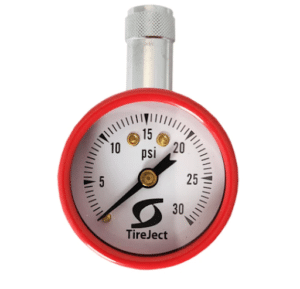
How Does TPMS Work?
TPMS solutions work in two different ways: direct and indirect. The former uses sensors within the wheel that measure the internal air pressure. The latter doesn’t include physical sensors but measures the rotational speed of all wheels. In case the speed of a wheel changes, then there’s a change in its air pressure as well.
What are the Benefits of TPMS?
Using an affordable TPMS solution leads to several benefits such as accident control. By monitoring the pressure inside all trailer tires, you can prevent accidents waiting to happen. Additionally, maintaining optimum tire pressure will allow you to provide the best combination of comfort and handling, not to mention that fuel efficiency would be enhanced as well. Also, when maintaining correct tire pressure, the tires would last longer, which is beneficial for maintenance costs.
9. Lighting and Electrical Connections
Towing a bumper pull horse trailer is all about safety, comfort, and efficiency. Numerous factors are involved, including proper lighting and electrical connections. Both are crucial for safely hauling, loading, and unloading horses.
 Essential Lighting for Bumper Pull Horse Trailers
Essential Lighting for Bumper Pull Horse Trailers
A BP horse trailer’s electrical system includes various lighting sections, all of which matter a lot for towing such a rig the right way.
Tail Lights
Tail lights mark the rear of the trailer for other motorists to see and be alerted by, especially in harsh weather or at night.
Brake Lights
In most cases, tail lights incorporate brake lights as well. They light up when you press the brake pedal of your tow vehicle, signaling others that you’re slowing down or stopping.
Turn Signals
Turn signals can be separately mounted or incorporated in the tail light section, depending on the model. They indicate the direction you’re about to turn.
Reverse Lights
When you’re backing up with your horse trailer, the reverse lights come on, assisting you in navigating your way easier when it’s dark.
Side Marker Lights
Additional lighting fixtures in the rear of the trailer include side markers. These lights make the trailer more visible to others and thus enhance safety.
License Plate Lights
Your license plate number should always be illuminated, as this is required by law. License plate lights take care of this.
Interior Lights
Interior lighting in a bumper pull horse trailer matters as much as the exterior lighting sections. When it’s dark, loading and unloading is much easier when there’s sufficient light. The same goes for the horse area: horses don’t like dark spaces, so proper illumination will help them feel calm.
Clearance Lights
Clearance lights resemble side marker lights, but the former are placed on the top four corners of the bumper pull horse trailer’s upright structure. They serve as indicators of the width, length, and height of the trailer.
How to Ensure Proper Electrical Connections in Your Bumper Pull Horse Trailer
You can ensure all lighting fixtures and electrical connections will help you tow your BP horse trailer in the safest possible way by inspecting all connections, sockets, and plugs. Cleaning the main trailer connector frequently is a must, as well as ensuring it’s not loose when plugged in. Testing every light before hitting the road is another important procedure, and you’re also advised to inspect cable lines and tie the ones you notice have become loose.
Understanding Towing Capacity
Towing capacity is the maximum weight (trailer GVM) your tow vehicle can pull safely. GVM stands for Gross Vehicle Mass and includes the trailer’s weight and payload. To tow a bumper pull horse trailer safely, you should never exceed this limit under any circumstances.
What Factors Influence Towing Capacity?
The factors that influence towing capacity the most include the powertrain of your tow vehicle, as well as its running gear, chassis, and braking system.
Vehicle's engine size and type
If your vehicle is equipped with a powerful engine developing a lot of torque, especially in low RPM ranges, then it could be suitable for towing a bumper pull horse trailer, but it’s never a guarantee that it would be capable enough. The transmission type and gear ratios, the transfer case, and the differential ratios matter a lot, too.
 Transmission type and gear ratio
Transmission type and gear ratio
Another major factor that determines the towing capacity of your tow vehicle is the transmission type it’s equipped with. Even if the rest is capable of towing heavy loads, the gearbox or transfer case could not withstand higher-than-average loads. The user manual should contain data about your tow vehicle’s capabilities.
Chassis and suspension design
The chassis and suspension of your tow vehicle may or may not be suitable for higher towing capacity. Depending on their design and structure, you might be limited in your choice of bumper pull trailers to haul with the said vehicle.
Braking system
Braking is of crucial importance when determining the towing capacity of a vehicle. Do not take any chances and exceed the towing capacity of your vehicle, especially if the brakes are not designed to cope with high payloads.
Vehicle's Gross Vehicle Weight Rating (GVWR)
The GVWR of a vehicle is the indication that will allow you to calculate the towing capacity of your vehicle. It stands for the total weight of the tow vehicle, trailer weight, and combined payload.
How Does Gross Trailer Weight (GTW) Differ From Tongue Weight (TW)?
GTW (Gross Trailer Weight) is the total trailer weight, including payload and equipment, while TW (Tongue Weight) stands for the weight on the trailer’s tongue hitch. Both should never be exceeded due to safety concerns.
How to Determine Your Vehicle's Towing Capacity:
Referring to the owner’s manual or contacting your dealer would allow you to easily determine the towing capacity of your vehicle. By checking its VIN (Vehicle Identification Number) online, you might also be able to receive such information.
Safety Margin and Overloading Risks
When you need to tow a bumper pull horse trailer, staying within recommended GVWR and TW limits is crucial for the safety of both horses and humans while on the road. Exceeding these limits might lead to a plethora of issues and possibly put you and your horses in danger.
Impact of Additional Load
Even when it seems that you’re not overloading your trailer, you can never be sure until you have it weighed when fully loaded. Horses, passengers, tack, safety equipment, supplies, and belongings could add a lot of weight and easily pass the maximum allowed payload. As a chain reaction, this would ultimately affect the towing capacity of your vehicle and jeopardize safety.
Upgrading Towing Capacity
There are ways to increase the towing capacity of your tow vehicle if you don’t want to buy another, but you still need to pull a trailer with a higher GVM. By adding various components and upgrades to the transmission, engine, cooling system, and frame, and installing a weight distribution hitch, you might be able to achieve success.
Towing Capacity and Trailer Size
The towing capacity of your vehicle determines the dimensions and weight of the bumper pull horse trailer you could pull safely, but it all starts with the number, size, and breed of the horses you need to haul. In some cases, the trailer you need would not be a good fit for your existing tow vehicle. Since no compromises with the appropriate trailer size for your horses should be allowed, you might end up having to suit up your vehicle or replace it with another one that could cope with the GVM and TW of the bumper pull horse trailer you need.
Maneuverability Basics of Bumper Pull Horse Trailers
Maneuverability stands for the ease of navigating your horse trailer and tow vehicle around tight spaces such as parking lots, garages, and narrow, windy roads. To enhance maneuverability, you should consider several factors and use various techniques. For instance, getting used to the wider turning circles when pulling a BP trailer will help you steer the vehicle more adequately around corners. When it comes to backing up, it’s best to practice the maneuver first and see how the trailer reacts to turning the wheel in any direction. Additionally, make sure you get used to the new, wider mirrors on your tow vehicle, as well as the bigger width of the trailer, especially when trying to park in reverse. Don’t forget to factor in the weight and height of the trailer, both of which affect the stability and braking power of your tow vehicle. Keeping a bigger-than-usual distance is always advised when maneuvering with a bumper pull horse trailer attached.
Understanding Towing Speed in Bumper Pull Horse Trailers
Towing speed refers to the maximum recommended speed when pulling a bumper pull horse trailer. This factor can either be imposed by the vehicle manufacturer or by the local regulatory body in charge of traffic laws. Not exceeding the recommended speed will keep you out of trouble and help you cope with unexpected situations while on the road.
National and State Regulations on Towing Speed Limits
To have a better understanding of national or state towing speed limits, you need to keep an eye on road signs or check the local legislation to make sure your speed complies with the law. Different states may have varying regulations concerning towing speed, which is almost always lower than common speed limits. Exceeding the latter could result in penalties, but what matters the most is that it jeopardizes towing safety.
Differences Between Highway and City Limits
Highway and city towing speed limits differ depending on the state you’re in, but there are other things to consider as well. For instance, you will be required to only use the right-hand highway lane when towing a horse trailer.
Factors Influencing Safe Towing Speed
Several factors influence the safe towing speed you should strive for, including the weight and size of your bumper pull horse trailer, road conditions, weather, handling, and more.
Trailer Weight and Size
The weight and size of your trailer are part of the aspects that affect safe towing speed because the heavier a bumper pull horse trailer is, the harder it would be for the tow vehicle to brake. Additionally, heavier trailers are more difficult to handle in emergencies, not to mention their greater tongue weight could affect steering.
>> LEARN MORE ABOUT PROPERLY TOWING A HORSE TRAILER
Road Conditions
Even if you’re well within the speed limit, you might need to slow down when road conditions force you to do it. Narrow roads with frequent turns and plenty of uneven sections always pose a challenge, not to mention when the surface is slippery or covered with gravel. In such conditions, it’s best to keep the speed below the limit.
Wind Conditions and Trailer Sway
Harsh weather can make safe towing nearly impossible, especially when strong winds are involved. Wind can easily cause a bumper pull horse trailer to sway and eventually flip to its side, and one way to avoid this is to travel at low speed, which could help you regain control of the trailer if it starts to fishtail. There’s a way to prevent this from happening: sway control bars, which is a topic we already discussed in this guide.
Safe Speed Management Essentials
High speed is often the cause of road accidents, especially when combined with other negative factors. The considerations to make when it comes to safe speed are several, including its relation to trailer control, maintaining constant speed, utilizing cruise control, and more.
The Impact of Speed on Trailer Control
Speed has everything to do with proper control of your bumper pull horse trailer. Maintaining the right speed would always result in a safe stopping distance and allow for precise maneuvers. Higher speeds result in risks, such as swaying and hard or impossible braking.
Benefits of Maintaining a Consistent Speed
Maintaining a consistent speed results in greater comfort, fuel efficiency, and other factors, the most important among which are better control and precise steering and cornering, which improve safety.
Adaptive Cruise Control and Towing
Modern vehicles suitable for towing bumper pull horse trailers are often equipped with adaptive cruise control systems which allow you to maintain the same speed when road and weather conditions allow for it. The system lets you accelerate or decelerate smoothly without pressing the brake or gas pedals, which allows for better handling and predictability.
Tips for Safe Speed Management
Speed management requires you to pay attention to several factors and indications at once. Except for keeping your eyes on the road, you need to frequently check your mirrors and the trailer cameras if you have a monitoring system installed in your bumper pull horse trailer. You should also be prepared to change lanes smoothly when needed and avoid sudden maneuvers and sharp turns. Keeping your distance is always key, as you’d need more space to brake in case of an emergency. Having good enough visibility all around you is crucial.
Maintenance for Optimal Hauling of Bumper Pull Horse Trailers
Before you set off on your next journey, you should carefully inspect your trailer’s wheels, brakes, emergency braking systems, coupler, lights, and a dozen other areas. Frequent maintenance and safety checks, alongside regular inspections and thorough cleaning of the interior, exterior, and undercarriage of the trailer will make it safer and extend its lifespan.
Permits and Licenses for Towing Your Bumper Pull Horse Trailer
Typically, bumper pull horse trailers don’t require specific towing licenses or permits. Still, this doesn’t mean that there aren’t things to consider. In most cases, regulations applicable to towing bumper pull horse trailers vary from state to state. This means that you need to know both your local legislation and the rules in the states you intend to pass through.
You need to have your trailer registered if your local laws require you to do so. In some cases, the GVCR (Gross Vehicle Combined Rating) of your rig might require you to abide by a licensing regime. In terms of driver’s licenses, a CDL (Commercial Driver’s License) may be required in these rare cases. It’s always best to check the rules and regulations applicable at your local DMV (Department of Motor Vehicles).
How to Hook Up a Bumper Pull Horse Trailer
To hook up a bumper pull horse trailer safely, you need to have the right tow vehicle. The latter should be capable of handling the former’s tongue weight and GVM.
- Using the correct hitch type is also essential, alongside a set of features such as brake controllers, safety chains and cables, jacks, and so forth.
- Understanding how road conditions and speed affect safety, as well as how to distribute weight and calculate towing capacity, is critical.
Knowing how to hitch the coupler to the receiver and adjust the ball mount when needed is an essential part of hitching and towing a bumper pull horse trailer.
Final Thoughts and Expert Insights: Perfecting Your Bumper Pull Horse Trailer Towing Skills
From Brad Heath, Owner of Double D Trailers
"I can't stress enough the critical role that horse trailer construction plays in ensuring safe towing experiences. When towing a bumper pull horse trailer, understanding the interplay between the trailer’s design and its towing performance is key. Our trailers are engineered with meticulous attention to balance and weight distribution, which are pivotal in achieving a stable tow. A well-constructed trailer, with a thoughtful balance between the front and rear axles, minimizes the strain on the towing vehicle, providing a smoother ride and reducing the risk of trailer sway. This is particularly vital in emergency maneuvers or in challenging driving conditions.
Moreover, the materials used in construction directly impact the trailer's overall weight and durability. At Double D Trailers, we use high-quality horse trailer materials that strike the perfect balance between being lightweight for easy towing and robust enough to ensure safety and longevity. The aerodynamic design of our trailers also plays a crucial role in reducing wind resistance, leading to more efficient fuel consumption and easier handling. When towing a bumper pull horse trailer, it’s not just about the vehicle you use; it’s equally about the design and quality of the trailer you’re towing. A well-designed and well-constructed trailer ensures not just the safety of the horses but also contributes to a stress-free driving experience for the owner. Remember, investing in a well-constructed trailer pays dividends in the form of safety, ease of towing, and peace of mind on the road."
Stay Informed! Join Our Email Newsletter
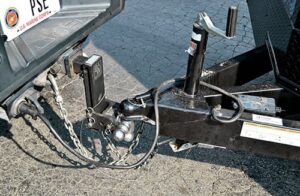
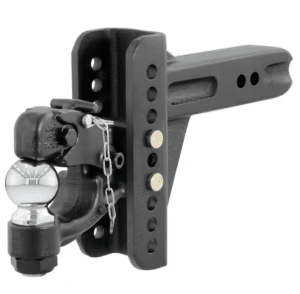
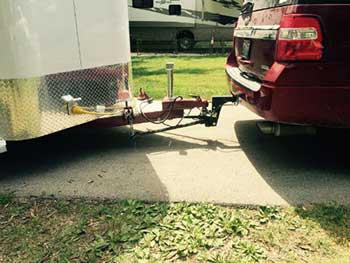
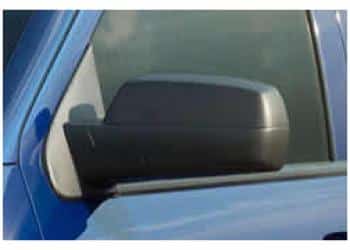
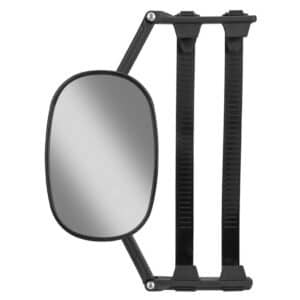
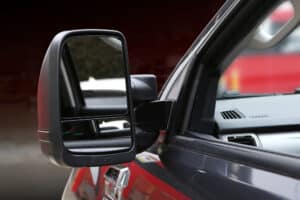
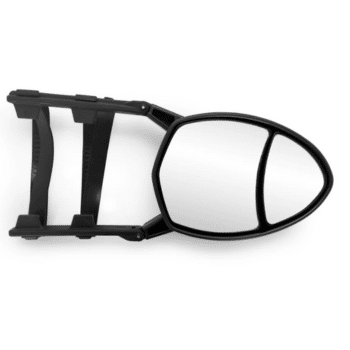
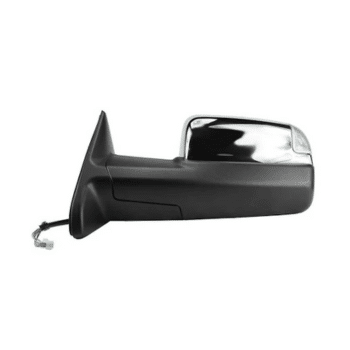
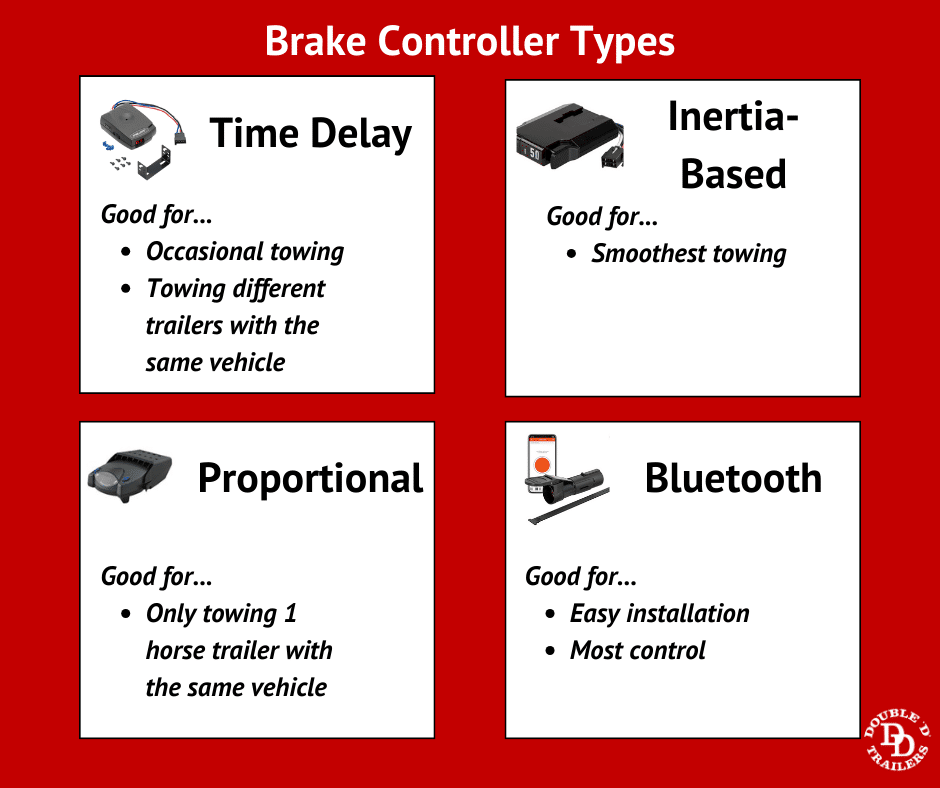
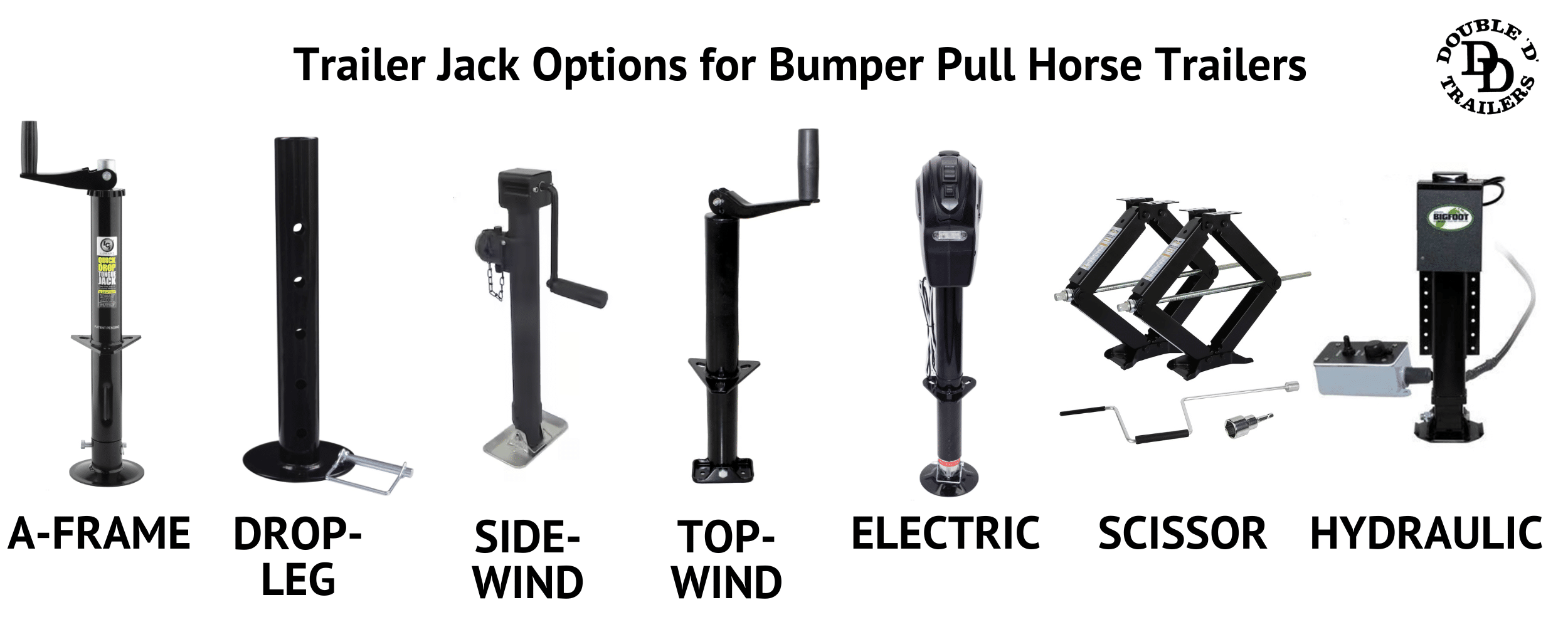

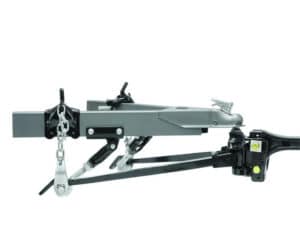
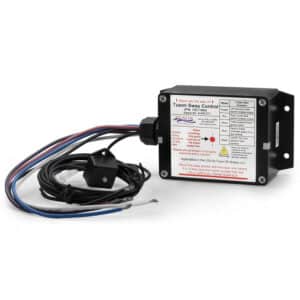
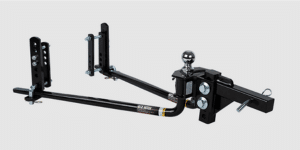
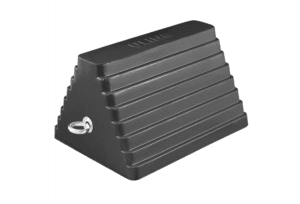
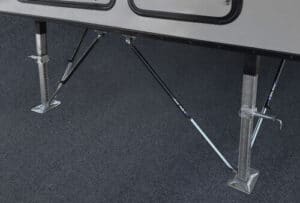
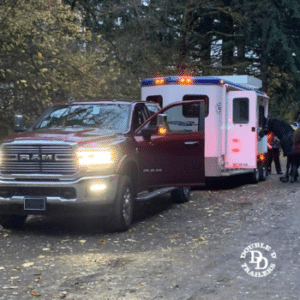 Essential Lighting for Bumper Pull Horse Trailers
Essential Lighting for Bumper Pull Horse Trailers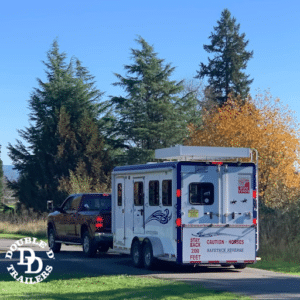 Transmission type and gear ratio
Transmission type and gear ratio